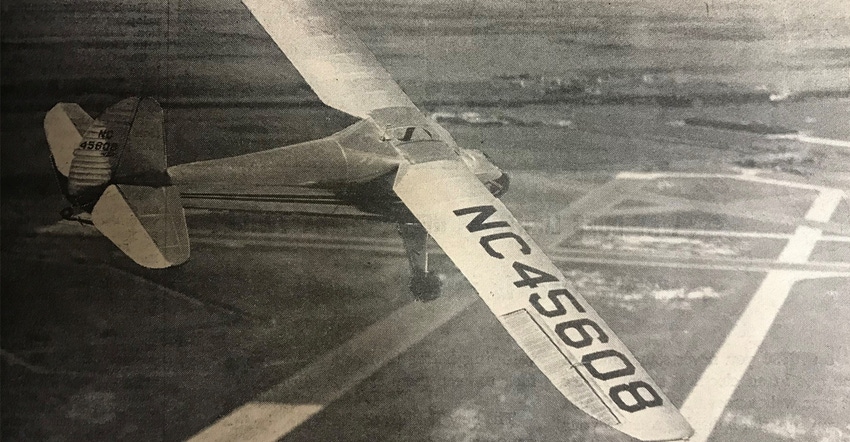April 13, 2020

In the years following WWII, the popularity of aviation was growing by leaps and bounds on Kansas farms, with the organizational meeting of the Flying Farmers held in May of 1946.
Many aviation promoters were predicting that soon there would be a need for landing strips on most farms to accommodate both farmers with their own planes and any number of people with whom they did business. The prediction was that doctors, veterinarians, feed salesmen, livestock buyers and other professionals would be arriving on farms and ranches by plane.
Kansas farmers at the time were being encouraged to build landing strips on their farms. In fields where there was room, it was recommended to build two runways — one with north-south orientation and the other east-west — to accommodate wind direction.
A landing strip was recommended to be no less than 1,500 feet to 1,800 feet long and 100 feet wide, with a slope of no more than 3%. The preferred surface was, ideally, virgin buffalo grass.
60 Years Ago
It was the 25th anniversary of the establishment of the Rural Electrification Administration, and the leaders of the effort were celebrating a leap in the number of farms and ranches using electric power. Starting with just 11% in 1935, the percentage of farms and ranches with power in 1960 had hit 97%. Administrators also noted that the amount of electricity used per farm was also growing rapidly, doubling about every 7 years.
45 years ago
Soil-borne wheat mosaic virus was taking a toll on the Kansas wheat crop in May of 1975. A survey of 1,500 fields done by Kansas State University found the disease in 60% of the fields, with dwarf and chlorotic plants showing up on about 39% of the land area.
The hardest hit areas were Dickinson, Marion, Lyy, Harvey, Sedgwick, Cowley, Sumner, Pratt, Stafford and Pawnee counties.
20 Years Ago
A new $30 million yearlong beef promotion campaign was launched in 2000 with the hopes of getting a dual message of beef’s nutrition and convenience to American moms.
The advertising campaign, launched primarily in women’s magazines, was titled, “Beef: Nutrients that work as hard as you do!” and featured recipes that were fast and easy to prepare.
Goerzen is executive director of the Old Cowtown Museum in Wichita.
About the Author(s)
You May Also Like




